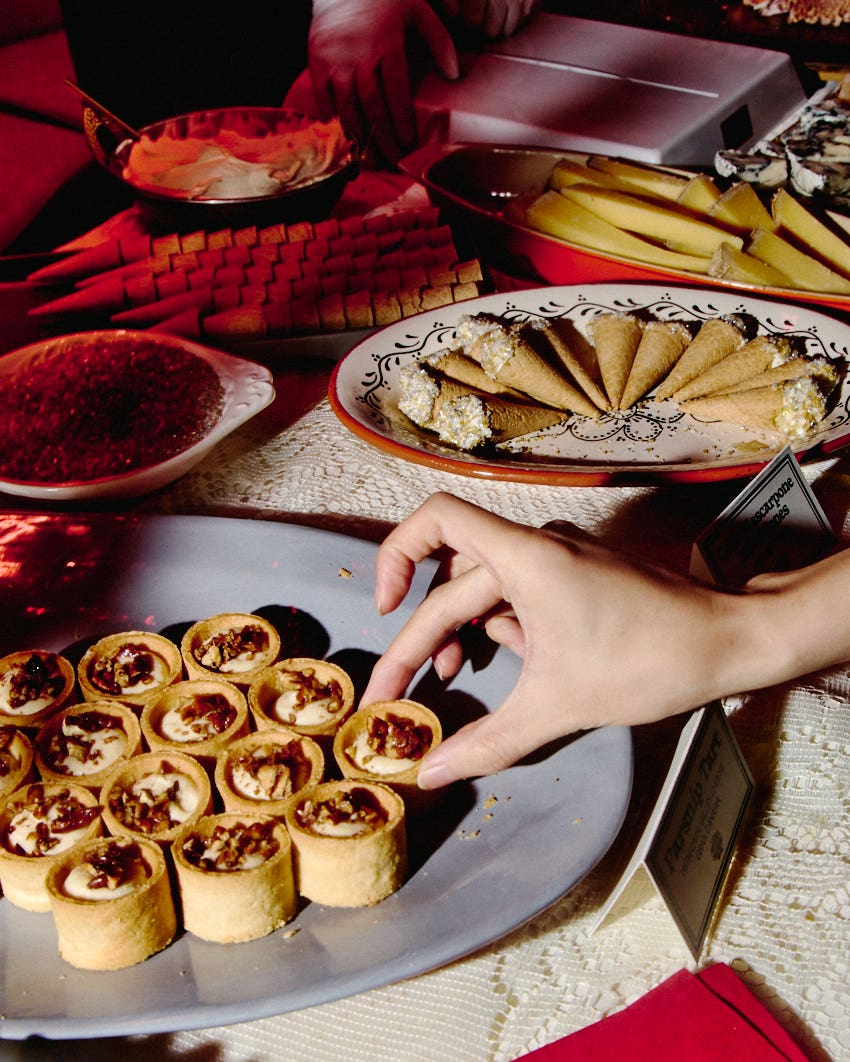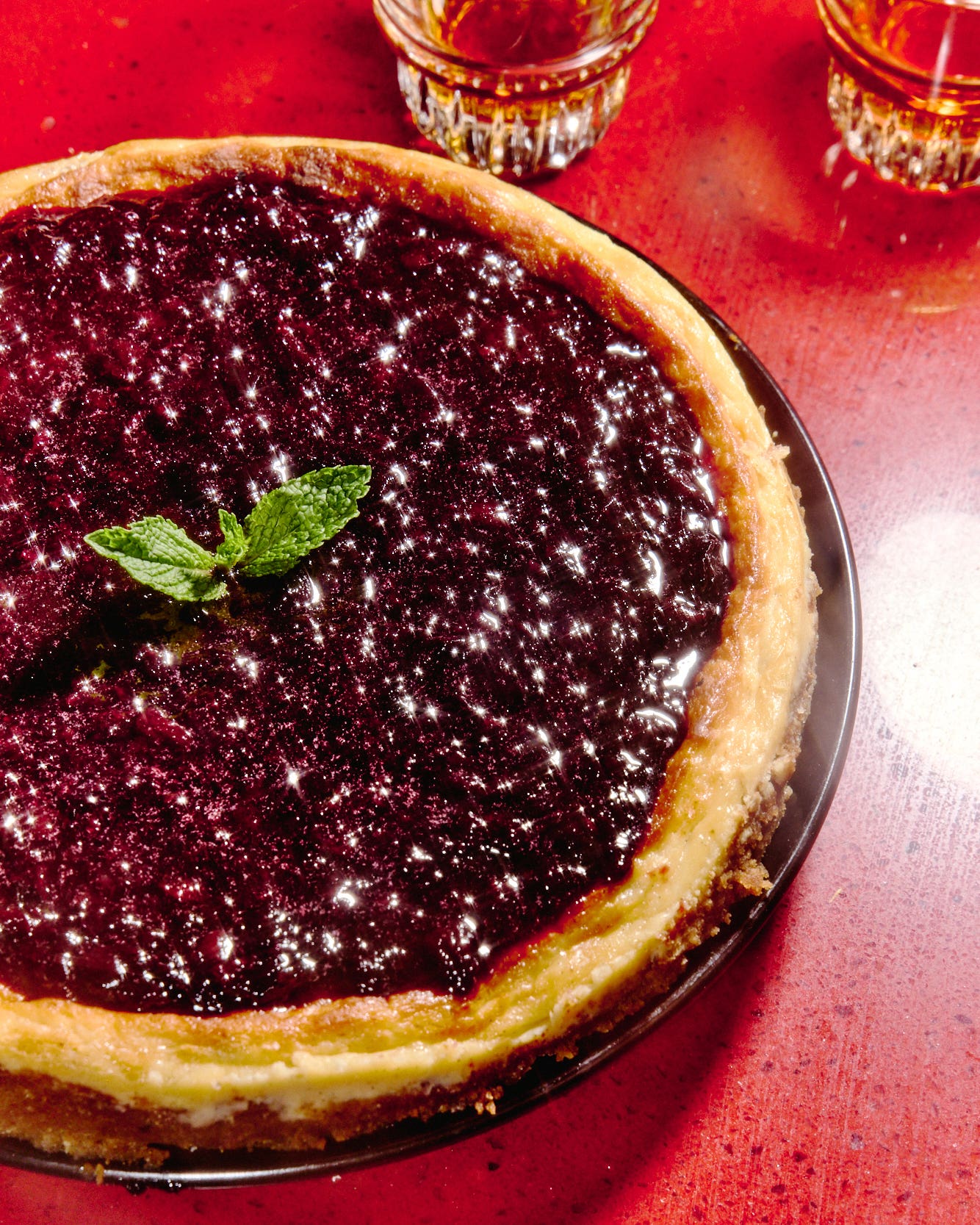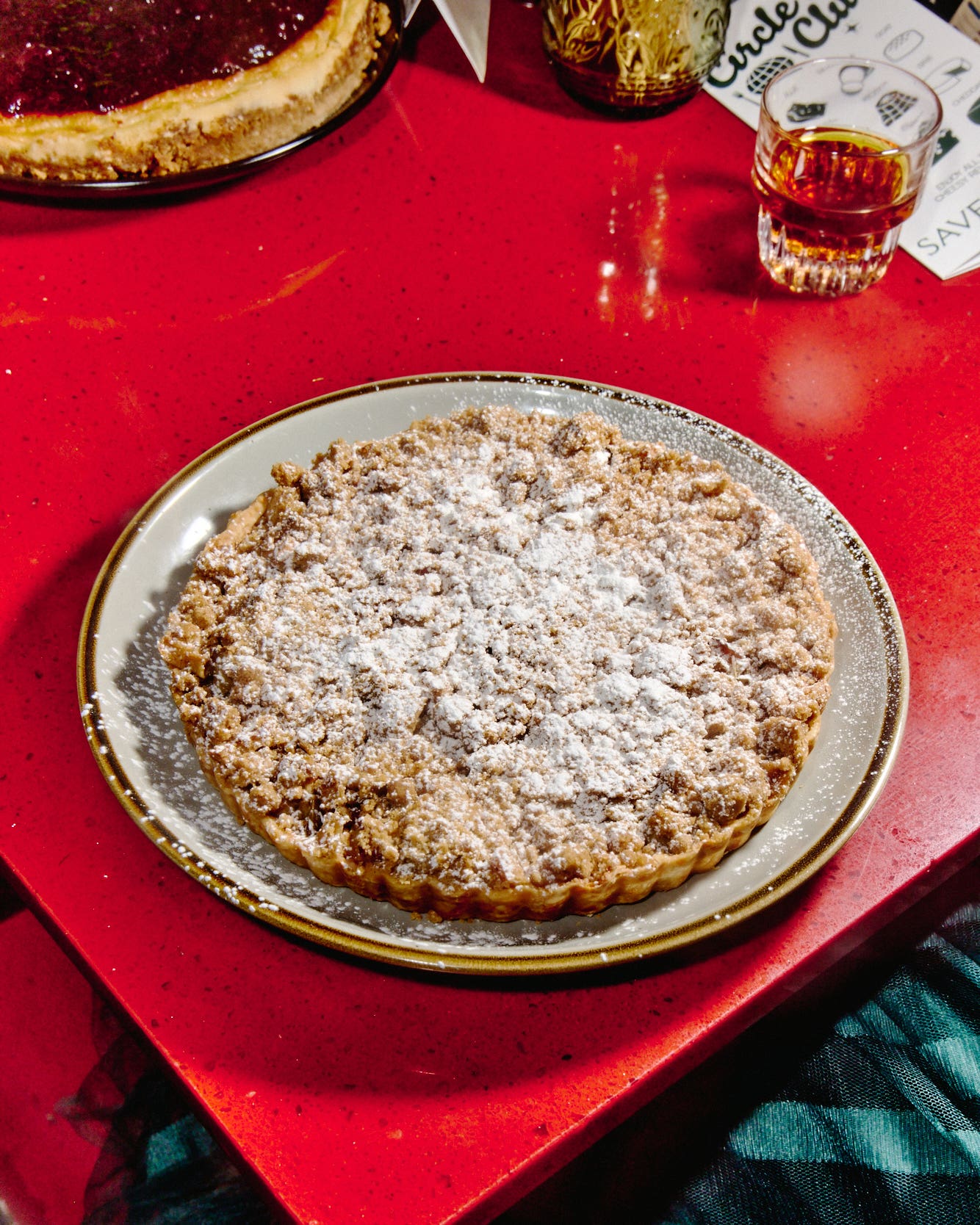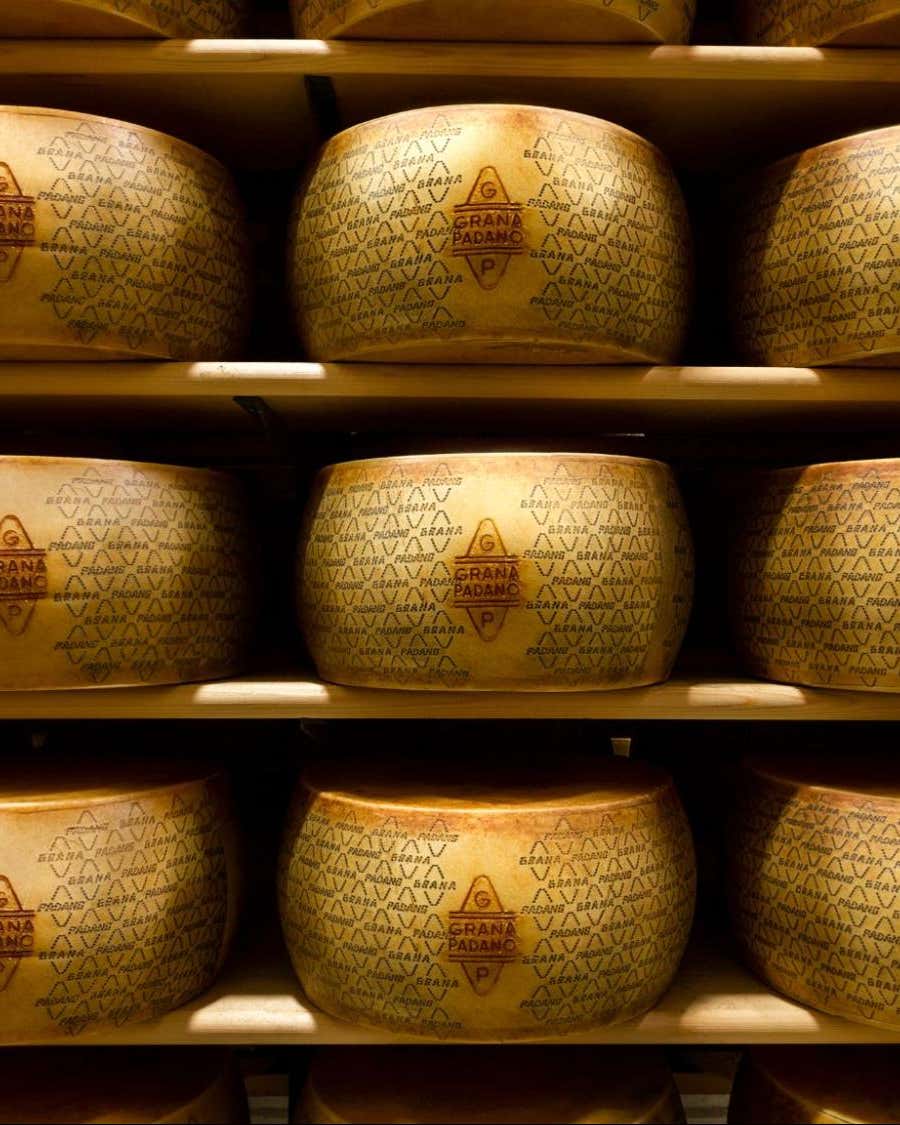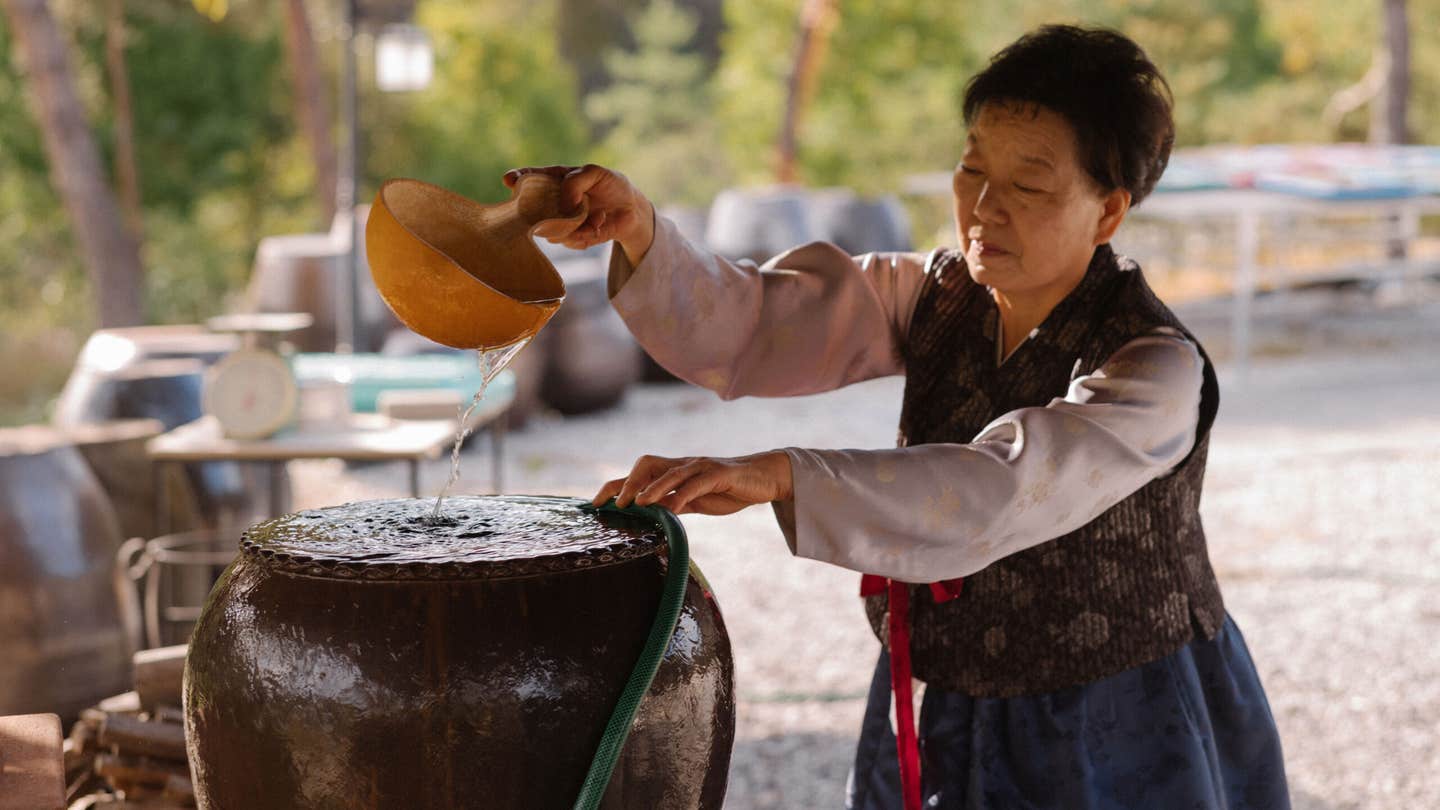This Ingredient Is the Secret Behind Crafting a Japanese-Style Cocktail
From sake and shochu to genmaicha and rice-based vodka—let us count the ways to mix with the world’s most important crop.
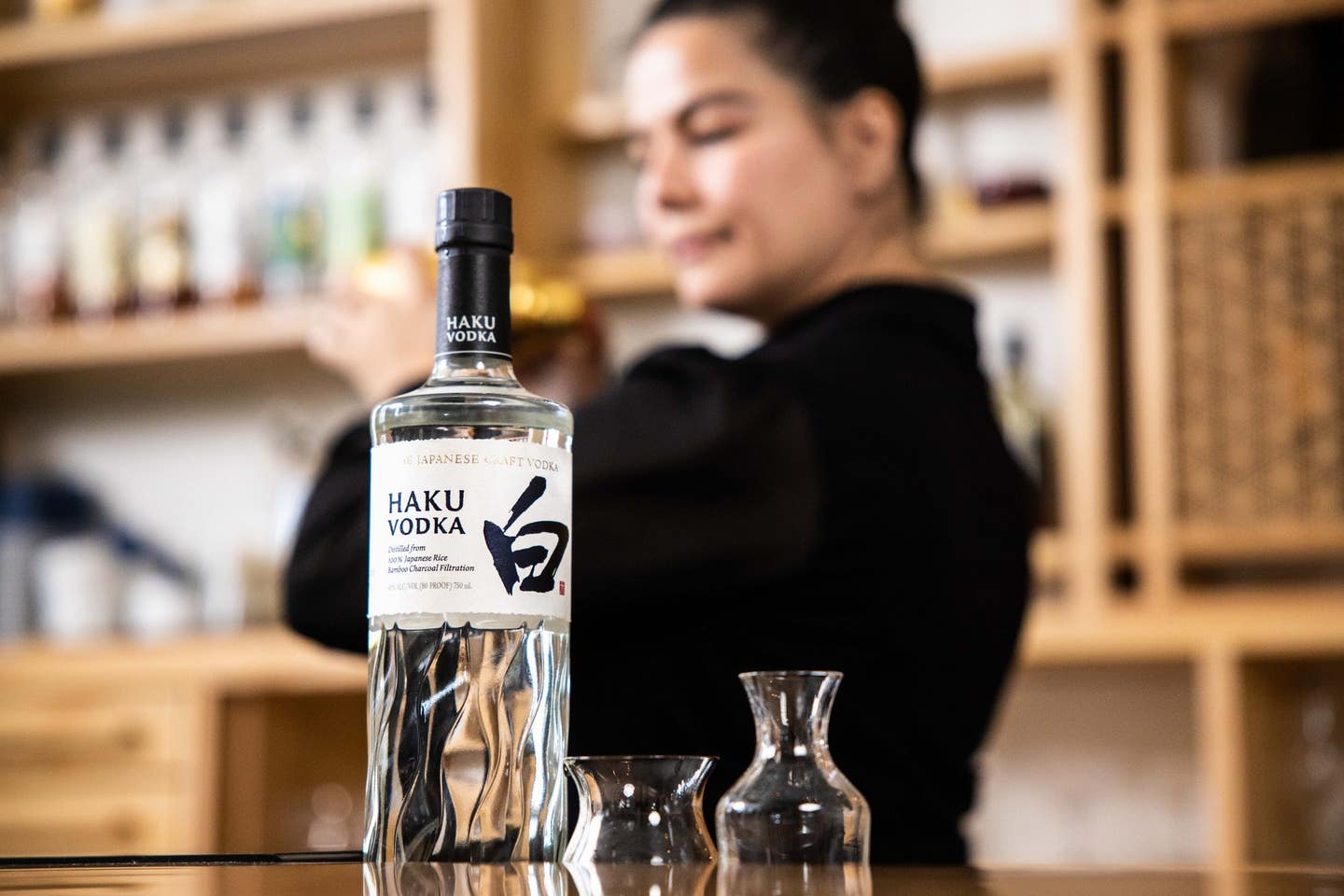

Though rice is one of the world’s most important crops, we don’t see it represented behind the bar nearly enough. Historically, you’d be much more likely to encounter spirits crafted from agave, barley, corn, and sugarcane. Yet, as Asian foods gain more mainstream visibility in the States and as Asian cocktail culture flourishes both at home and around the world, rice is slowly making its way into cocktails through a number of trending ingredients.
In Japan, where rice has been grown for three millennia, there was already a culture of making and drinking rice-based alcohol and spirits. These have traditionally included sake, a vastly diverse category of fermented rice beverage, and shōchū, a liquor distilled from rice and other ingredients such as barley, sweet potatoes, and buckwheat. But in recent years, other Japanese spirits have emerged, most notably Suntory’s 100 percent rice-based vodka, Haku, which distills the essence of Japanese rice in a fresh and compelling way.
Ready to start mixing cocktails with rice? We’ve got a field guide to Japanese rice-based cocktail ingredients that you should know. Use them in three excellent Suntory Haku Vodka-based recipes by Julia Momose, bartender and author of The Way of the Cocktail.
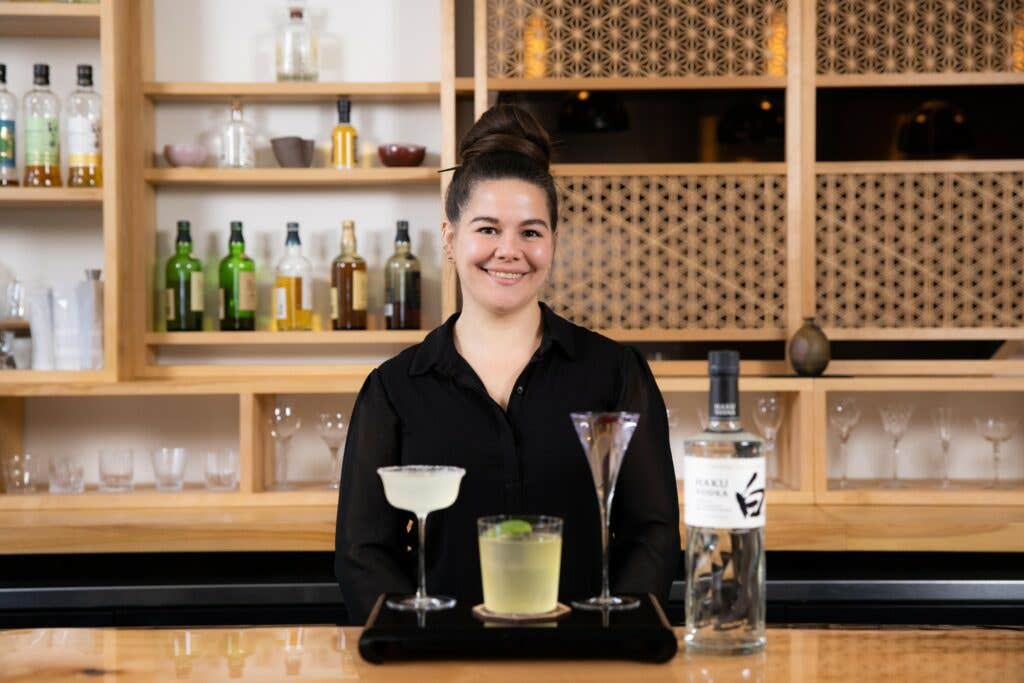
Sake
For those new to using rice in cocktails, Momose recommends getting their feet wet with sake. “Take the opportunity to open a bottle of Japanese sake and taste liquid rice,” Momose says. “Depending on what yeast was used, you can find floral and fruity qualities. Trying different sakes is an incredible way to show the breadth of flavor in this grain.”
It’s important to note that sake is not a spirit, nor a liqueur. Though often referred to as a “rice wine,” sake is made with yeast and fermented, meaning it has more in common with beer than with wine. But in addition to yeast, sake brewers use koji — a catalyst made by saccharifying (breaking down into simple sugars) cooked rice or soybeans using a mold called Aspergillus oryzae — which in turn ferments the white rice.
Sakes are graded using a rice-polishing ratio, which represents the percentage of the grain that remains after milling — that is, removing the husk and bran to reveal the pure starch. A good category sake to acquaint yourself with is junmai ginjo, which requires a ratio of 40 percent removal and 60 percent remaining. This highly-polished rice yields bright, aromatic flavors in sake. A junmai-shu has even more rice flavor, since it does not use brewer’s alcohol.
Shōchū
Shōchū is a clear white spirit native to Japan. It’s distilled from rice, barley, sweet potatoes, among other ingredients. Though it’s gained some attention abroad, shōchū remains most popular in Japan. Still, it’s worth testing out as a secondary ingredient in cocktails. For a distinct rice-based shōchū option, Momose recommends Hakutake Shiro Ginrei Shōchū, a light, floral spirit brewed at low temperatures with Ginjo yeast, yielding an aroma similar to that of Ginjo sake.
Japanese Vodka
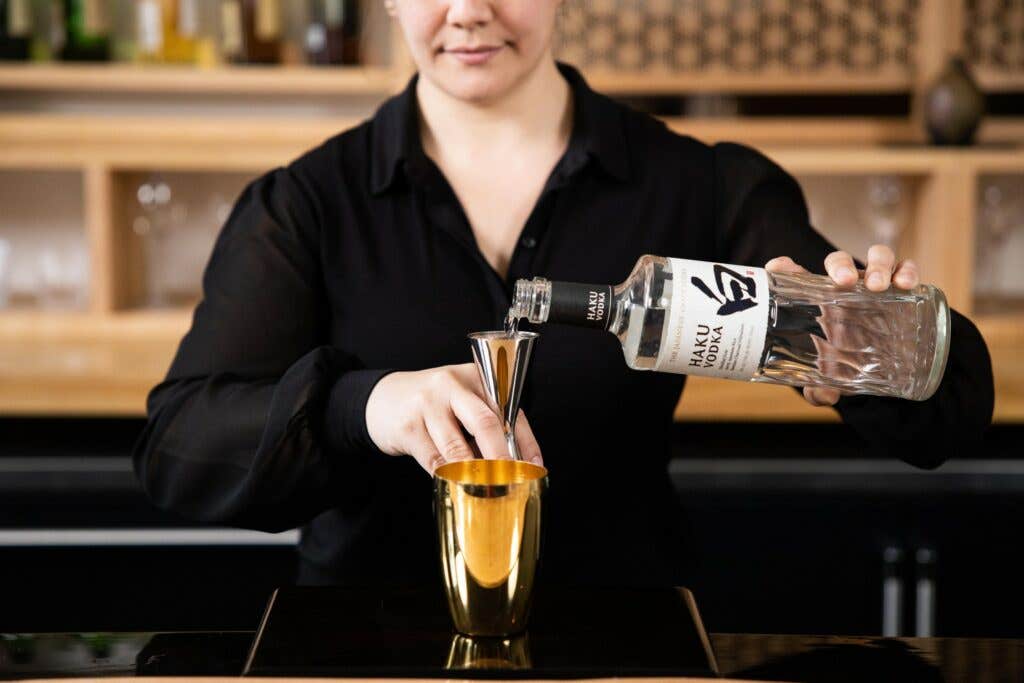
The most prized rice category in Japan is uruchimai, or short-grain rice. Once this rice has been fully polished, with husk and bran removed, it’s known as “hakumai” —the most labor-intensive and thus the most pure form of white rice. Hakumai is the rice eaten daily in Japan, and it is also used for specialties like sushi. This ingredient forms the base of Haku, a subtly sweet 100-percent rice vodka from the House of Suntory, which was founded in 1923 as a pioneer of subtle, refined, and complex Japanese whiskies. Suntory is rooted in its commitment to “monozukuri”—the connection between technology, knowledge, and the spirit of Japan’s dedication to craftsmanship; Suntory Haku Vodka is a new iteration of that philosophy, inspired by its thoroughly Japanese hero ingredient. Today, Haku is a fresh, distinctively Japanese take on vodka, inspired by the island nation’s traditional rice spirits, including shōchū and sake.
Haku Vodka starts on the island of Kyushu, a region known for its production of rice spirits. White rice is fermented with koji then double-distilled (in pot and column stills), blended, and filtered through bamboo charcoal. Made to be mixed in cocktails, Haku carries the fragrant profile of rice while remaining a neutral blank canvas. “To be honest, I really like Haku in a vodka soda—it’s so good and so refreshing,” Momose says. “I also enjoy it in a martini and in a highball drink I make myself at the bar: Haku, Japanese sake, and a little bit of soda.”
Japanese ‘Vermouth’
From the nearly one-and-a-half century-old Tsutsumi Distillery in Kumamoto, Japan comes this Oka Kura Bermutto—a wholly original Japanese take on fortified wines like vermouth. This product starts with a pure junmai sake that’s then fortified with 100-percent rice shōchū and local botanicals like yuzu, kabosu, and sansho pepper.
Genmaicha
For a non-alcoholic rice ingredient, Momose recommends genmaicha, a toasted brown rice tea. The tea is brewed with genmai, or brown rice where the husk has been removed, but it still has a layer of nutrient-rich germ, imparting a pleasant, toasty, nutty flavor.
Recipes
Violets in Rain
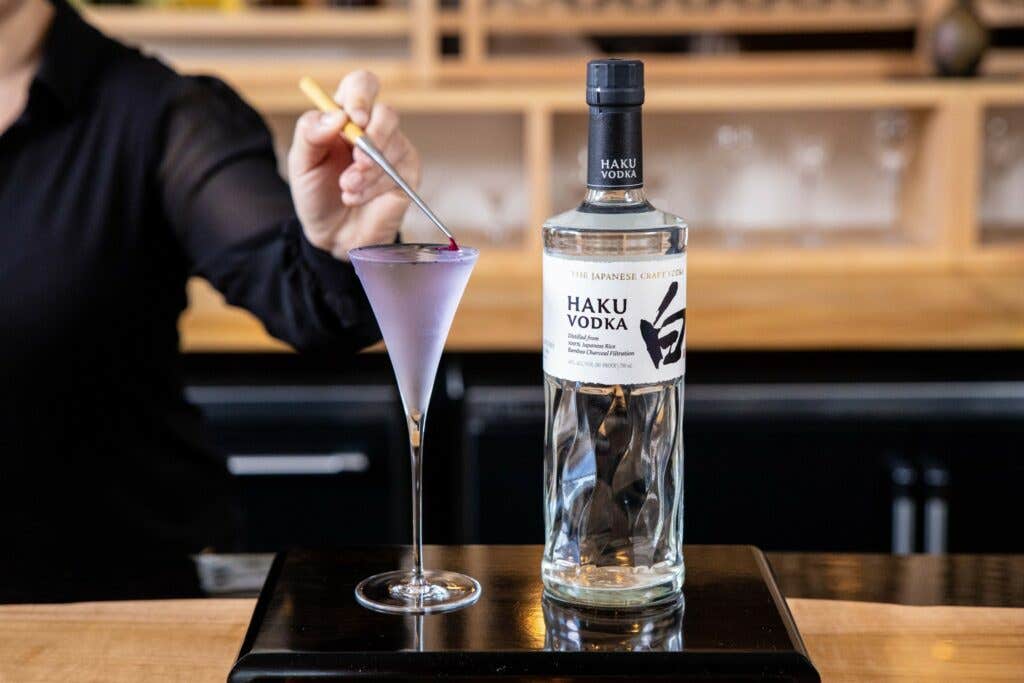
To showcase the subtlety and versatility of rice, Chicago bartender Julia Momose stirs Suntory Haku Vodka with a vacuum-distilled rice shōchū, sake, and violet flower liqueur. “Violets in Rain showcases the delicate side of rice while highlighting the versatility of the raw ingredients within the realm of Japanese spirits,” Momose says. “Suntory Haku Vodka, vacuum-distilled rice shōchū, and a fruity junmai ginjoshu from Hiroshima come together in this martini variation with just a kiss of crème de violette. It is subtle, yet boldly ricey all at once.” Experience the difference rice vodka makes with this beautiful lilac-colored cocktail.
Ingredients
- 1 part Suntory Haku Vodka
- 1 part shōchū (preferably a vacuum distilled rice-based variety, like Takahashi Shuzo Hakutake Shiro Ginrei)
- 1 part Junmai Ginjo sake
- 1 barspoon crème de violette
- Edible flower petals, such as Magenta Dianthus, for garnish
Instructions
Step 1
- Fill a mixing glass with ice, then add the Suntory Haku Vodka, the shōchū, sake, and crème de violette. Stir until chilled, then strain into a chilled tulip glass; garnish with edible flower petals and serve immediately.
Genmai Sour
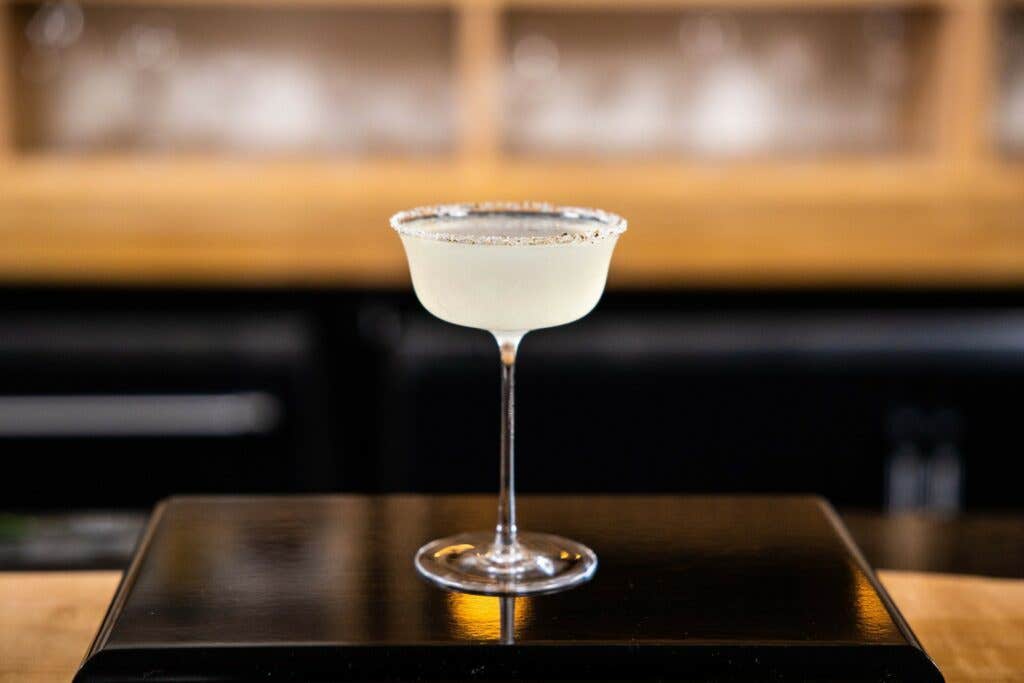
Julia Momose created this Japanese-inflected vodka drink using Suntory Haku Vodka. “The Genmai Sour is a shaken and bright cocktail, juxtaposed with the comforting and warming qualities of toasted rice green tea paired with yuzu-koshō, a fermented green chile and yuzu paste,” Momose says. “This mix highlights the zesty and peppery side of the Haku Vodka, and features a no-waste rim, ensuring every bit of the delicious genmaicha may be enjoyed.”
Find both genmaicha and yuzu-koshō at your local Japanese market, or online.
Ingredients
For the syrup and rim:
- 2½ tsp. loose leaf genmaicha
- ½ tsp. yuzu-koshō
- 1¾ cups plus 2 tsp. sugar, divided
- 1 tbsp. plus 1½ tsp. Kosher salt
For the cocktail:
- 3 parts Suntory Haku Vodka
- 1 part Genmaicha Yuzu-Koshō Syrup
- 1 part Lemon Juice
- Genmaicha Salt and Sugar Rim
Instructions
Step 1
Step 2
Step 3
Step 4
- Make the syrup: To a small bowl or teapot, add the genmaicha, the yuzu-koshō, and ¾ cup plus 2 tablespoons hot water (about 185°F). Set aside to steep for 1½ minutes, then strain, reserving the solids. Stir in 1½ cups sugar until dissolved, then set aside.
- Make the rimming mixture: Dehydrate the spent tea from making the syrup by laying it on a large baking sheet in the oven set at the lowest possible temperature until completely dried, about 45 minutes. (Check and stir periodically to ensure the leaves don’t burn.) Using a small spice grinder or mortar and pestle, grind the dried tea leaves to a fine powder. In a small bowl, stir together the remaining ¼ cup plus 2 teaspoons sugar and the salt; season to taste with the ground genmaicha, reserving the rest for another use.
- Wet the rim of a coupe glass with water, then, holding the glass at a 45-degree angle, dab the edge of the glass into the mixture while slowly turning to coat in a thin layer of genmaicha seasoning.
- To a cocktail shaker filled with ice, add the Suntory Haku Vodka, lemon juice, and 1 part of the reserved syrup. Shake until chilled, then strain into the prepared glass and serve.
Haku Chawari
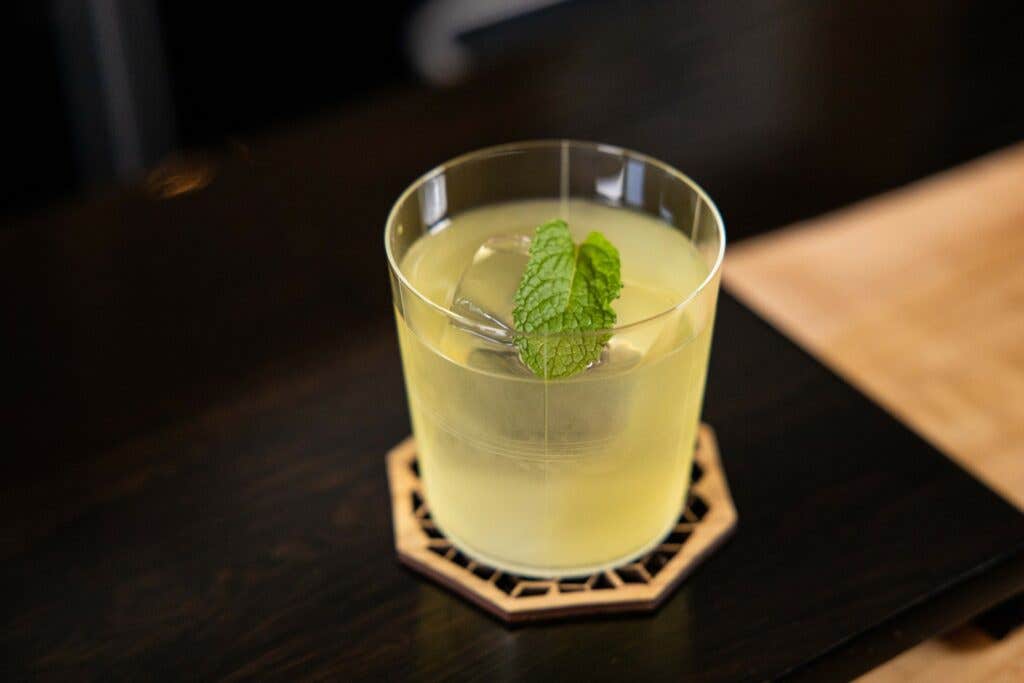
Chicago bartender Julia Momose created the Haku Chawari as a reimagined take on the classic shōchū serve. “Chawari means ‘cut with tea,’ or ‘mixed with tea,’ and is a popular way to drink shōchū, the national spirit of Japan, in many izakaya and homes,” says Momose. “I felt it was a fitting nod to the origins of Suntory Haku Vodka itself, being that it starts in Kyūshū, and like shōchū, is fermented with kōji. It then goes on to a second distillation, and is charcoal filtered, processes which classify it as vodka.”
“I wanted to introduce an ingredient from Kyūshū to accent the vodka and the tea in this simple mix,” she continues. “Japanese Bermutto from Tsutsumi Distillery in Kumamoto is an aperitif-style drink made from nihonshu fortified with rice shōchū which has been infused with kabosu, yomogi, yuzu, and sanshō. It is peppery, herbaceous, and citrusy, all flavors which accent Suntory Haku Vodka brilliantly.”
Ingredients
- ¾ parts Suntory Haku Vodka
- 1 part Oka Japanese Bermutto
- 3 parts sencha green tea, brewed and chilled
- Mint leaf, for garnish
Instructions
Step 1
- Fill a lowball glass with ice and stir to chill the glass. Strain off any melted ice shards, then add the Suntory Haku Vodka, Bermutto, and tea. Stir gently, and top with ice as needed to fill the glass. Garnish with a mint leaf, and serve.
Enjoy Responsibly. Haku® Vodka, 40% Alc./Vol., ©2021 Beam Suntory Import Co., Chicago, IL.
Keep Reading
Continue to Next Story
